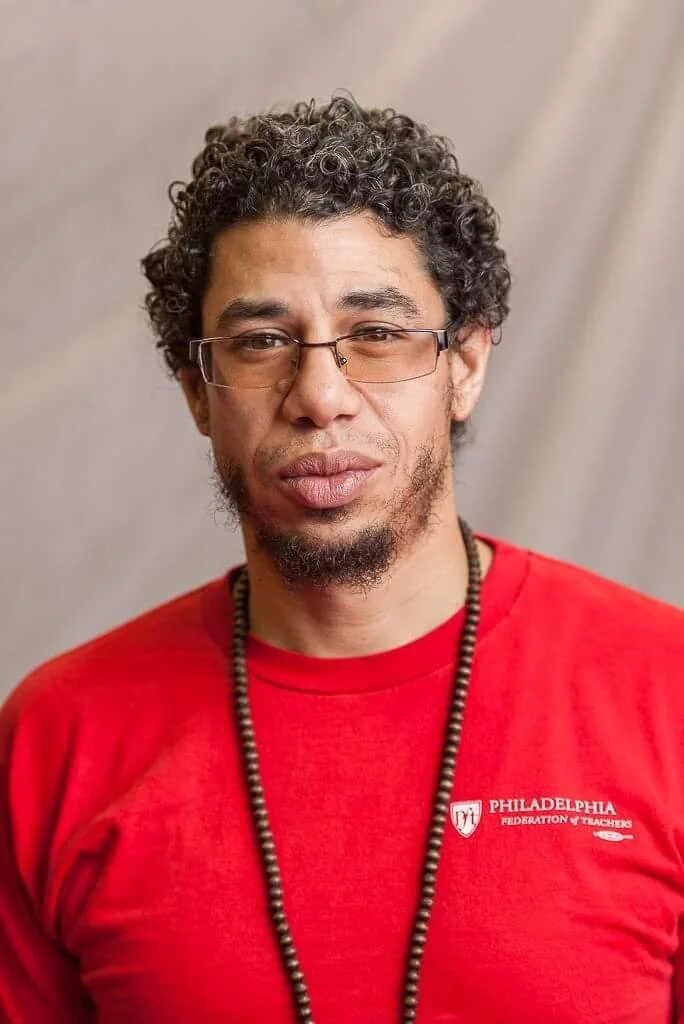Student and Youth Activism: Impact and Memory
Week 11 - 11/14/2019
“We have these institutions that are supposed to protect us, or keep us educated, or promote democracy, but they aren’t. We can’t keep believing in those institutions. We, as members of those institutions, have to take responsibility and make those institutions into what we want them to be.”
- VanJessica Gladney, Penn & Slavery Project
Clara Luper, who led student efforts to integrate Oklahoma City in the 1950s
Openings
When we think about activism movements, we often think of the work of adults. In school history classes, on the news, in our public consciousness, we remember the adults who marched on Washington or occupied Wall Street. But what about the students? What roll has student activism played in making change in our political system? To what extent have student activist movements been remembered by their communities? How have student activists affected change in their communities? Why don’t we celebrate or honor student activists the way we do adults?
Guiding Questions and Suggested Literature
Black Lives Matter Week of Action
Why are student walkouts powerful acts of resistance? How have student walkouts affected their communities?
Student walkouts
Eliza Shapiro, 2019. “Lock-Ins and Walkouts. The Students Changing City Schools from the Inside”
Olivia Waxman. 2018. “National Student Walkout Day.” Time Magazine.
How have students affected change in their communities? What has been the lasting impact of this student activism?
Youth activism
Jessica Taft. 2010. “The Street Is Our Classroom: A Politics of Learning or We Are Not the Future: Claiming Youth Authority” in Rebel Girls: Youth Activism and Social Change in the Americas
Andreana Clay. 2012. “Introduction.” The Hip-Hop Generation Fights Back: Youth, Activism and Post-Civil Rights Politics
Hava Rachel Gordan. 2009. “Reading, Writing, and Radicalism: The Politics of Youth Activism on School Grounds” in We fight to win: Inequality and the Politics of Youth Activism.
How have student activism movements been remembered—by the activists? By their communities? By society?
Local Histories of youth activism
Clara Luper. 1979. "Behold the Walls.” (Reprinted in An Oklahoma I Had Never Seen Before).
Karen Brodkin. 2001. “Introduction.” Power Politics: Environmental Activism in South Los Angeles.
Impact of school closures
Matthew P. Steinberg and John M. MacDonald. 2019. "The effects of closing urban schools on students’ academic and behavioral outcomes: Evidence from Philadelphia." Economics of Education Review 69 (2019): 25-60.
In-Class
Inspired by the work of the Masterman High School students honoring the students who walked out of Philadelphia high schools in 1967, we hoped to explore the impact and legacy of student and youth activism in the United States. We began class with discussions of two local student activism movements: the 2001 power plant protest led by Latinx students in the South Gate neighborhood of Los Angeles and NAACP Youth Council protests to integrate Oklahoma City in 1958. We then invited a panel of speakers with experience as student activists and facilitating student activism to discuss the significance of student activism in society. Our panelists were VanJessica Gladney, a doctoral student in the history department at the University of Pennsylvania and a founding student leader of the Penn and Slavery Project; Chris Rogers, a doctoral student at the University of Pennsylvania Graduate School of Education, a board member of Philadelphia Student Union, curriculum chair for Black Lives Matter Week of Action, and Cultural Organizer; and Ishmael Jimenez, a teacher, facilitator for Youths United for Change, and involving students in Inquiry To Action Groups.
Panel recap
Question: Why activism?
Chris Rogers (CR)- Inspired by my mother, a teacher. “It don’t have to be this way!”
VanJessica Gladney (VG)- When Penn said it had nothing to do with slavery, then “learning about the constitution and how a lot of the rich white men owned slaves and wrote that into the constitution to maintain power and keep slavery legal and protected, so I’m angry about this, and then Trump wins. We have these institutions that are supposed to protect us, or keep us educated, or promote democracy. We can’t keep believing in those institutions and we as members of those institutions have to take responsibility and make those institutions what we want them to be. Laws without morals are useless.”
Ismael Jimenez (IJ)- “I always wanted to get involved, but I needed a catalyst—For me, it was the Iraq war, my first foray into activist politics… As educators, we need to speak truth to power… We need to involve the students into a larger conversation that we [adults] are all aware that they’re totally cut off from.”
Question: What do you do? What has been the impact of your work?
Panelests VanJessica Gladney (left), Chris Rogers (center), and Ismael Jimenez (right)
VG- Penn & Slavery began small, as five undergrads, writing OpEds, meeting with the provost, public historian, talking about the project with others. Some students did not realize the gravity of the project, as this is more than just a project. The places we are at were built by the bodies of enslaved people.
CR- Penn complicit in experimentation on black prisoners in the 1960s the afterlife of slavery. Collection of skulls. Black Lives matter at school week shares a syllabus, making the schools teach about the black lives matter movement against white supremacy. Three core demands: ethnic studies and black history as grad requirement, restorative justice, hiring and retaining black educators. Councillors not cops. “Teacher working conditions are student learning conditions.”
IJ- Interested in raising level of activism in high school, for students to “understand frames of oppression.” Incentivize engagement. Lean in to the contradiction. Complicating narratives, encouraging students to do things with their conclusions.
VG- Angry about first, that white people shirk burden of dealing with privilege, grappling with the privilege. Second, the idea that we want to fix it, even without power to fix it, representing something that should have the power to change things. “Activism is activating people to care.”
CR- “Webs of Causation” who can be made to be seen as guilty in the context of a crime. “At what point do the profits of slavery get recognized as bank accounts?” ‘Afterlife of slavery’ urban renewal gave Penn loads of money. Legacy of dispossession, not just with Penn. Crisis of legitimacy. Mindful but distancing of history
IJ- Ideal is moving past the issue of slavery and not undressing and healing the wounds. History of MLK not known after “I Have a Dream.” Talking about Carter G Woodson. Deeper grappling, reconcile really scary that people would not want to engage in these conversations. Penn Bubble. False reality on campus. Cutting off bubble no real interaction, interactions that do exist fits into the ‘white savior’ model.
CR- “The academy loves critique… People carry this knowledge but then don’t do shit about it.” Tying it to an on the ground organization. A lot of people see university as fucked up. The need to make the connection from the academy to organizing, make new tools.
VG- Doing the work under the name of the university makes it problematic. Getting stuck. Being forced to do that labor and undercutting all that labor because it’s being done here. A constant challenge.
IJ- theory of change, framework meant I wanted to do activism. Eyes wide open, knowing who is what in those spaces. Have these conversations more often, transferring intellectual knowledge into lived reality. Class dynamic of that transferral. Kids often already know that. Uses a “woke rubric” in class.
How have your movements been remembered, how should we broadly remember them?
IJ- “We need to control the narrative. Perfect, romanticized images of people is harmful; dirty stinky underpants need to be understood.”
CR- “I believe in archiving, create/recover archives and stories of those who were erased or excluded. Making connections to everyday-ness of things.”
VG- “When I think about the way I want [the Penn and Slavery Project] to be archived, I want it to be remembered as a resistance to the institution.”






